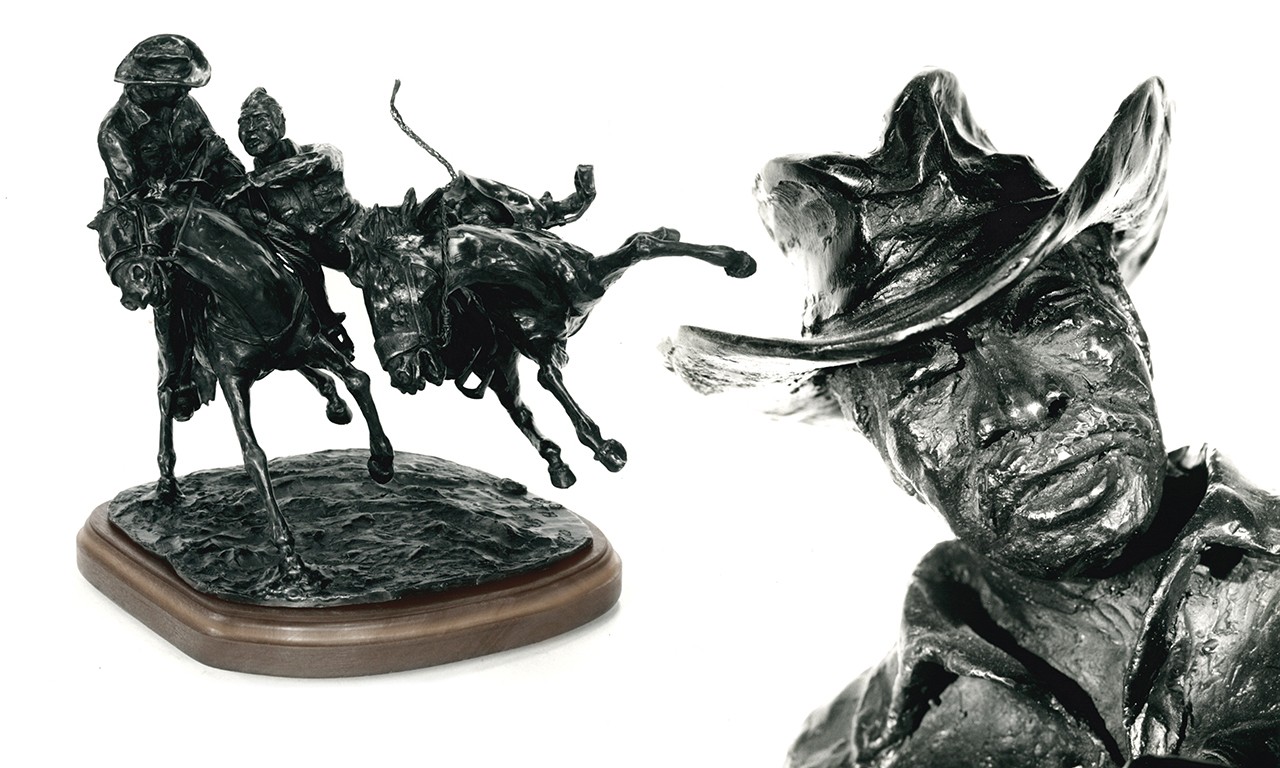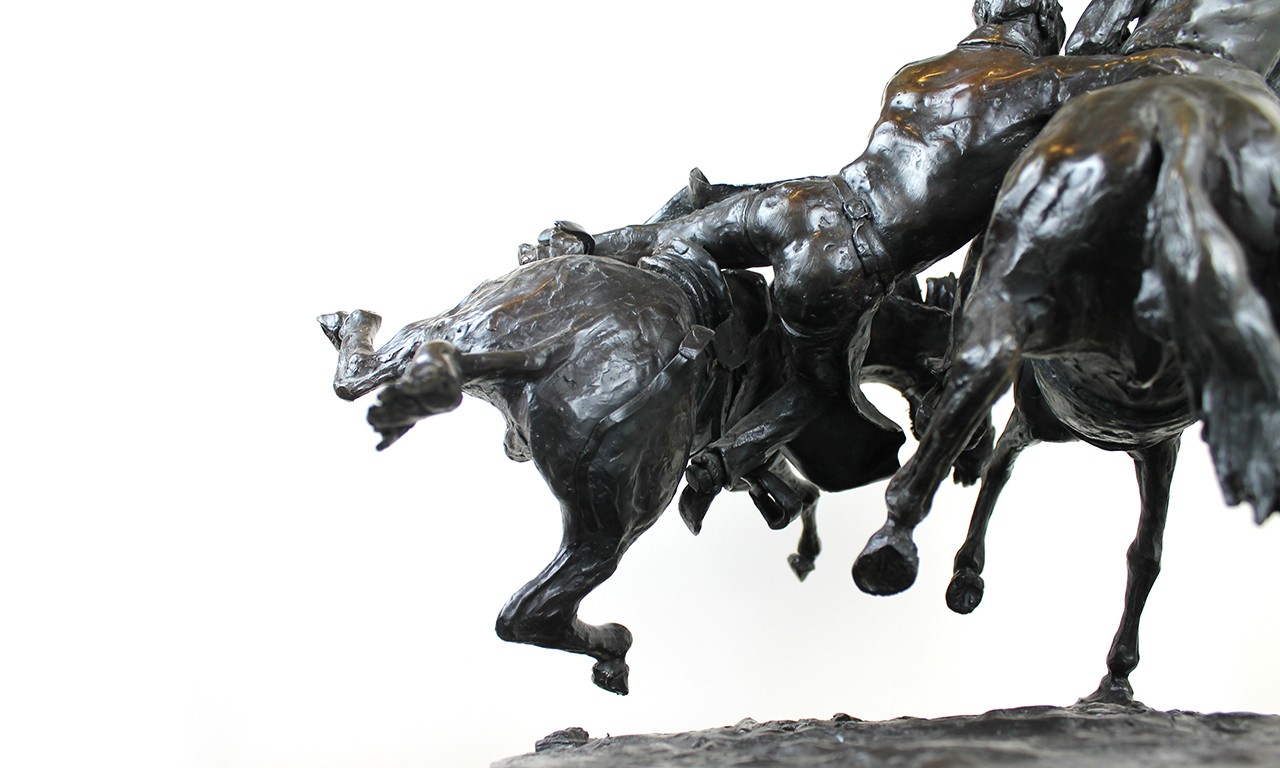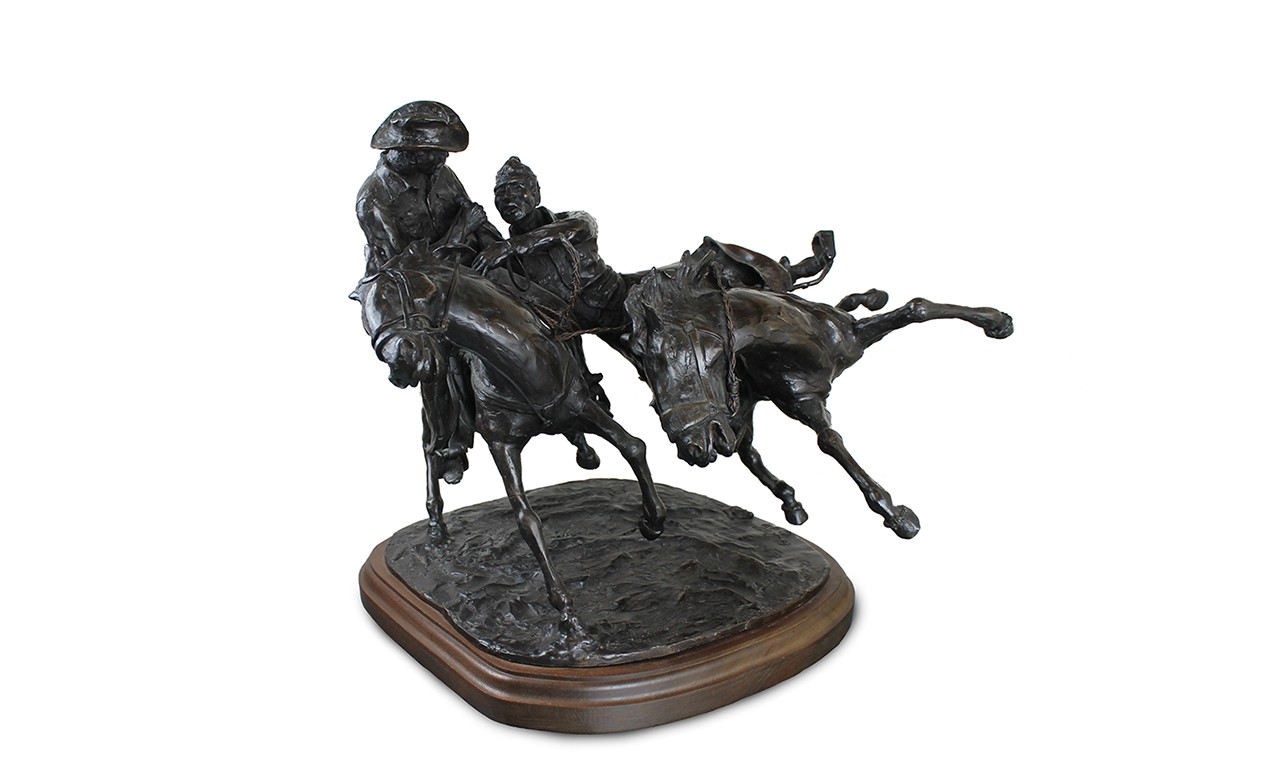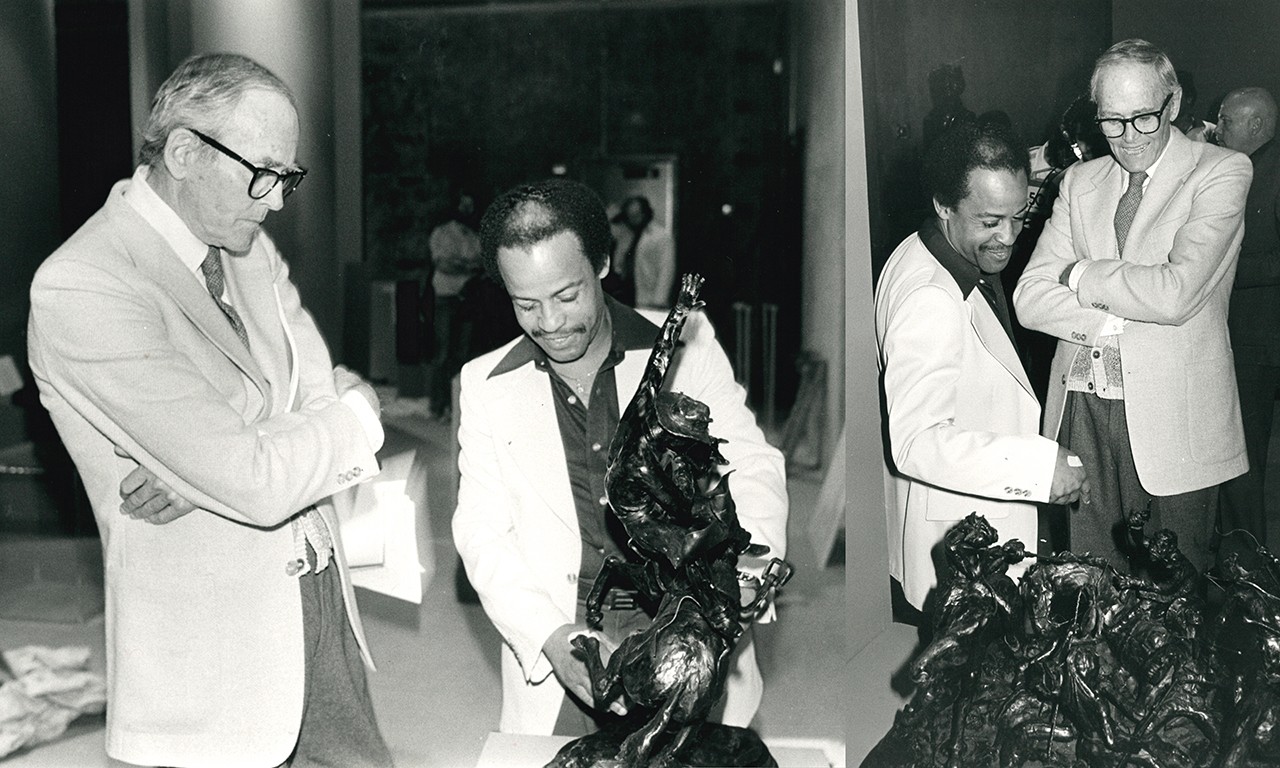 |
Eight is Enough, 1979
Ed Dwight (American, 1933-); Colorado
Bronze and wood; 17 1/2 x 25 x 21 1/2 in.
81.83.1
Gift of the Artist |
Outer Space to Creative Space
Ed Dwight is a man who has worn many hats over his lifetime. Real estate and construction entrepreneur, restaurateur, engineer, marketing representative, Air Force test pilot, the first Black astronaut trainee, and—perhaps most importantly—sculptor and educator. February is Black History Month, an opportunity to reflect on the 400 years of Black history in North America. Dwight helped desegregate an industry that had promised to be forward-looking and empowered men and women of color by drawing connections to their important role in the turn of the 20th century American West. In this post we look at the life and sculpture of the artist through the lens of Eight is Enough, a bronze he donated to the Bowers Museum in 1981.
 |
| Detail of 81.83.1 |
Early Years and Space Careers
Edward Joseph Dwight was born in Kansas City, Kansas in 1933. Throughout much of the 20th century, Kansas City was segregated, and Dwight grew up facing adversity and racism daily. As a child he was drawn to planes and building. By the age of four, he had already built himself a toy airplane out of cardboard. It was not until he was much older and saw Dayton Ragland, a Black pilot serving in the Air Force, on the front page of the local paper that he realized a career flying planes was a possibility for a man of color. In 1953 he joined the Air Force himself. After training for a few years, he finally got his certifications for flying around the same time he finished a degree in aeronautical engineering. He flew as an Air Force test pilot for several years.
 |
| Alternate view of 81.83.1 |
Near Stardom
In the 1960s President John F. Kennedy inspired the nation to look to the stars for the first time. With the Space Race underway, Kennedy wanted to find a qualified and diverse face for the U.S. Space Program. After looking at several candidates Dwight garnered national attention after getting through to the second phase of the Aerospace Research Pilot School. His face covered magazines, and at one point he was receiving up to 1,500 letters a day. However, NASA's 1963 selection panel did not choose Dwight. There may have been several causes, his press and media commitments kept him too busy to do the training that he needed to do and he alleged that he faced discrimination from the upper echelons of the program. Whatever the case, Dwight’s dreams of being the first Black man in space were dashed then dashed again later that year when Kennedy’s assassination effectively put an end to the pressure that NASA was receiving to have a Black astronaut. Dwight finished out his term in the Air Force in 1966.
Moonlighting
“I have researched and dramatized through the media of sculpture the many facets and accomplishments of the Black Americans so as to instill their existence in our time and space.”
Ed Dwight Once more a civilian, Dwight began working at IBM as a marketing representative. Early in his time there he was tasked with finding some metal wall hanging for the entrance of their Denver building, and unable to find anything that met the bill, picked up a welding torch and made something himself. It is not often that people are blessed with being able to follow two dreams, but Dwight was able to do so. While still working at IBM, he attended the University of Fine Arts and received a master’s degree in sculpture there. His real spark of inspiration came when he was commissioned to sculpt Colorado’s first Black lieutenant governor, George L. Brown. Inspired by recording a small piece of Black history through sculpture, he expanded his series to include seven more works. By the time he left IBM in 1976 he was making more money each year with his sculptures than he was making with his day job.
 |
| Henry Fonda and Ed Dwight standing in front of one of Dwight's works at the opening of an exhibit of The Gund Collection of Western Art, 1982 |
Great in Enough
The pièce de résistance of his artistic career was a series of 28 sculptures titled, “Black Frontier Spirit.” As his love of history grew over time, so did his love of the role of Blacks in the American West. Dwight took what bronze sculptors of the American West like Frederic Remington had done before him and began telling new narratives in which Black men were the actors. The title of this work is Eight is Enough. Bronc riding is an event that requires the rider to stay on a bucking horse for at least eight seconds. This sculpture shows two Black riders, one having narrowly survived a painstaking eight seconds and the other a lifeline to his distressed partner. Dwight also held on for dear life when forces larger than him tried to buck him loose. Though the first Black astronaut trainee never made it to space, Ed Dwight had done more than enough in terms of desegregating the frontier of tomorrow and recording the roles of Blacks in the history of the frontier.
Text and images may be under copyright. Please contact Collection Department for permission to use. References are available on request. Information subject to change upon further research.





Comments 3
I would love to see more of his sculptures. What an inspiring and talented man and I love that he would not give up.
"However, despite this NASA mysteriously did not select Dwight. There may have been several causes, not the least of which was that he faced discrimination from the upper echelons of the program," -- Dwight as a candidate [never inducted into NASA] earned honor for his inspirational role, as did full-fledged black astronaut Robert Lawrence picked on full merit a few years later. In my analysis as a space program veteran and spaceflight historian, Dwight had too many too heavy loads to struggle with that had nothing to do with bigotry, since the White House required him to take three day weekends DURING the 'aerospace research pilot' training in 1963 for national speaking engagements promoting JFK policies, while the other pilots spent full time on classes, books, and flying [his final class standing was 8th out of 16]. Dwight's expected White House backing failed to persuade NASA to pick him on public relations grounds [he admits he did not rate high enough on technical merit but blames this on the impact of his White-House-demanded publicity campaigns -- a plausible explanation]. The AF put him on their list of nominees for the 1963 selection but after consideration NASA did not even invite him to Houston for final interviews [only the top 2 of his ARPS class were finally selected]. Kennedy's death the following month obviously had nothing to do with the already-made NASA decision. In addition to his class standing and massive White-House-imposed public relations duties, NASA’s decision may also have been based on physical stature: at 5'03" he was three inches shorter than the minimum design spec for pilot height for the Apollo Lunar Module, requiring he carry a footstool onto any moon-landing mission he might have been assigned to.
Thank you for providing an interesting look at a multi-talented Black American. Visitors like myself would enjoy seeing his sculpture displayed in the museum in the future. Bowers Museum has such a varied collection. The Blog is a wonderful way to showcase these treasures.